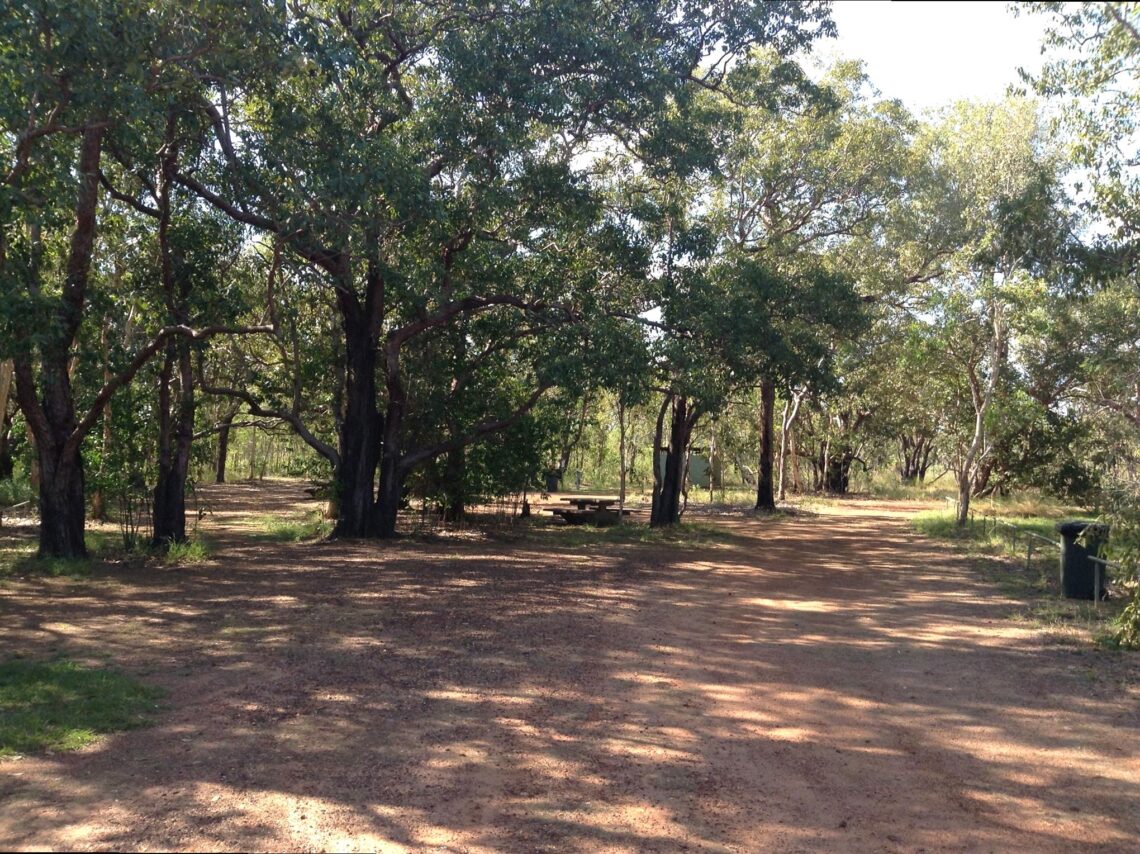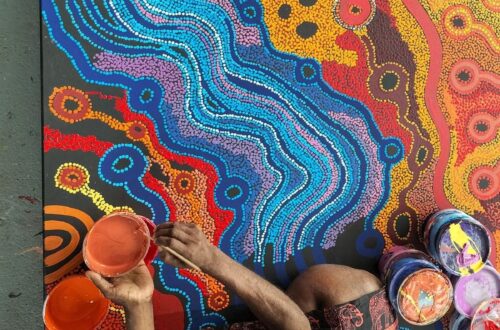The Malabanjbanjdju Shelter is an interesting place to visit in Kakadu National Park, Australia. It is not just a geographical formation but a testament to the enduring legacy of Indigenous Australians. The shelter contains ancient rock art that tells stories of the past and gives insight into the lives, beliefs and traditions of Aboriginal peoples. This paper will explore the geological wonders, cultural heritage and conservation efforts being made to preserve its unique features at Malabanjbanjdju. The combination of natural beauty and historical depth makes this site invaluable to both researchers and visitors alike. Throughout this article we will delve deeply into what makes Malabanjbanjdju Shelter a cherished element of Australia’s cultural landscape.

Understanding Malabanjbanjdju Shelter
Location and Geography
The strategic location of Malabanjbanjdju Shelter within Kakadu National Park is known for its diverse ecosystems and stunning landscapes. The geographical setting contributes to the unique formation of the shelter which is often surrounded by rugged terrain and lush vegetation. This oasis is not only a natural habitat but also a perfect location for preserving ancient artifacts and artworks. The surrounding environment enhances the site’s cultural significance making it an ideal backdrop for Indigenous peoples over thousands of years. Visitors can appreciate how these geographical features shaped their lifestyle and traditions as they walk through this shelter. With stunning views and rich biodiversity, there are many reasons why one should explore this important cultural site.
Geological Significance
The geological history of Malabanjbanjdju is written on its rocks revealing processes that have shaped it over millennia. Formed primarily from sandstone, the shelter has unique erosion patterns that create dramatic natural formations. This geological diversity is crucial not only to aesthetics but also preservation of archaeological materials in the region. The shelter has survived remarkably well against elements which speaks to its resilience and natural processes that have been at work throughout history. These geological features are studied by researchers to understand climate changes and historical landscapes better. In essence, the shelter serves as a living laboratory for geologists and historians alike.

Cultural and Historical Importance
Indigenous Heritage
The Indigenous peoples of Kakadu have held Malabanjbanjdju Shelter in high regard, viewing it as a sacred site that offers a deep connection to their ancestors. The artwork located within the shelter provides a pivotal link to the spiritual practices and beliefs of Aboriginal communities. This connection is not merely historical; it plays a vital role in the living culture of today’s Indigenous Australians. The stories and traditions passed down through generations are reflected in the rock art, which serves both aesthetic and spiritual functions. By preserving these artworks, we ensure that future generations can access this rich legacy. The cultural narratives encapsulated in the shelter emphasize the importance of land and heritage in Aboriginal identity.
Archaeological Discoveries
Archaeological findings at Malabanjbanjdju affirm its historical importance as a site of human habitation and cultural expression. Excavations have unearthed tools, pottery, and other artifacts that date back thousands of years, providing invaluable information on the lifestyle of the region’s earliest residents. These discoveries contribute to our understanding of how Indigenous people adapted to their environment and passed down their expertise through generations.

The findings also highlight the sophisticated social structures and trade networks that existed long before European contact. As researchers continue to explore the shelter, they are piecing together a more nuanced narrative of the historical landscape of Kakadu. Such archaeological insights inform current Indigenous rights discussions, making the site relevant to contemporary sociopolitical contexts.
Art and Symbolism in Malabanjbanjdju
Rock Art Styles
The rock art at Malabanjbanjdju Shelter encompasses a variety of styles and techniques that showcase the creativity and skill of Indigenous artists. Each artwork serves as a storytelling medium, often depicting animals, human figures, and abstract symbols that hold cultural significance. The methods used range from simple hand stencils to complex motifs, illustrating the evolution of Indigenous art over time. Understanding these styles helps us appreciate the cultural depth and diversity within Aboriginal artistry. Moreover, this rich tapestry of art allows contemporary viewers and scholars to connect with the spiritual and emotional experiences of the artists. Art enthusiasts, historians, and the general public alike can find beauty and meaning in the powerful imagery found in the shelter.

Meaning and Interpretation
The meaning behind the artworks at Malabanjbanjdju Shelter is both profound and complex, often representing stories of creation and the deep connection Indigenous Australians have with the land. The artworks convey themes of kinship, identity, and spirituality, effectively bridging the past with present cultural practices. As such, these symbols not only depict the physical environment but also express the beliefs and experiences of indigenous people. Interpretation of this art may vary depending on different perspectives within Aboriginal communities. Understanding these interpretations is essential for an enriched appreciation of its ongoing cultural relevance at this site. Through storytelling expressed in these artworks, we preserve rich heritage about indigenous cultures.
Conservation Efforts
Protecting Cultural Heritage
Efforts to conserve Malabanjbanjdju Shelter are ongoing and crucial for preserving this site for future generations. Various organizations, including local Indigenous councils and government entities, have initiated programs to protect the shelter from environmental threats and human impact. These initiatives involve regular monitoring of the site, educational programs for visitors, and community engagement to foster a sense of ownership and responsibility toward cultural heritage. Additionally, restoration projects aim to repair any damage done by natural erosion or tourism activities. The importance of involving Indigenous communities in these efforts cannot be overstated, as they bring invaluable knowledge and cultural perspectives to the conservation process. Together, these efforts aim to ensure that Malabanjbanjdju Shelter remains a living testament to Indigenous heritage.
Challenges to Preservation
Despite the best efforts to conserve the Malabanjbanjdju Shelter, various challenges threaten its integrity. Environmental factors such as erosion, climate change, and invasive species pose significant risks to the shelter and its surrounding ecosystem. Furthermore, the influx of tourists can lead to unintended damage if not managed properly. Addressing these challenges requires a coordinated approach involving local communities, government agencies, and environmental organizations. Ongoing education about the significance of the site is essential for promoting responsible tourism practices. Overall, creating an informed and engaged visitor base will be key to protecting this important cultural heritage site comfortably alongside its intrinsic natural beauty.
Conclusion
The historical, cultural, and environmental significance of Malabanjbanjdju Shelter makes it a crucial component of Kakadu National Park’s rich tapestry.
The shelter tells a story of resilience and collaboration between nature and culture through its geological wonders and stunning Indigenous rock art. Ongoing conservation efforts, although challenged, highlight the importance of preserving Indigenous heritage for future generations. As we deepen our understanding and appreciation of this extraordinary site, we become advocates for its protection. Efforts must be made to honor its legacy, ensuring that the stories embedded within its walls endure for centuries to come. Ultimately, Malabanjbanjdju Shelter stands as a powerful symbol of cultural continuity and environmental stewardship.
FAQs
FAQ 1: What is the historical significance of Malabanjbanjdju Shelter?
Malabanjbanjdju Shelter is significant because it holds invaluable rock art that reflects the history and culture of the Indigenous people of the Kakadu region, providing insights into their ancient lifestyles.
FAQ 2: Can visitors access Malabanjbanjdju Shelter?
Yes, visitors can access Malabanjbanjdju Shelter through designated trails, but it is important to follow park guidelines to respect and protect the site.
FAQ 3: What types of rock art can be found in Malabanjbanjdju?
The rock art in Malabanjbanjdju includes various styles, such as traditional motifs and contemporary interpretations, showcasing the evolution of art among Indigenous cultures.
FAQ 4: What conservation measures are in place for Malabanjbanjdju Shelter?
Conservation measures include monitoring the site for natural wear and educating visitors about the importance of preserving cultural heritage, along with ongoing research and restoration efforts.
FAQ 5: How does Malabanjbanjdju Shelter compare to other rock art sites in Australia?
Malabanjbanjdju Shelter is considered one of the more significant sites due to its rich accumulation of both ancient and modern rock art, as well as its deep connections to the Indigenous culture of the area, making it a unique point of interest in Australia.



